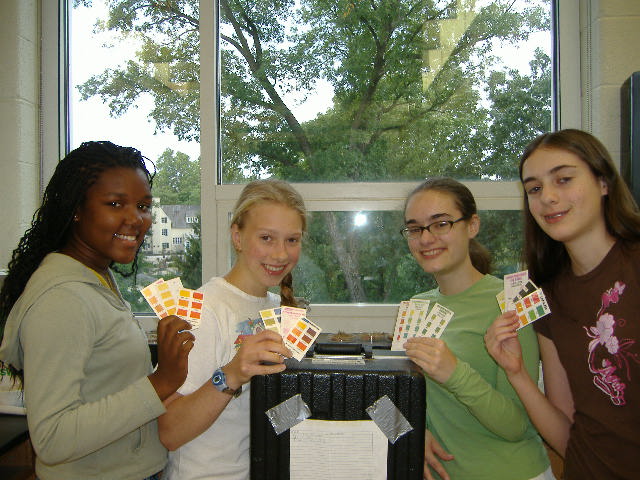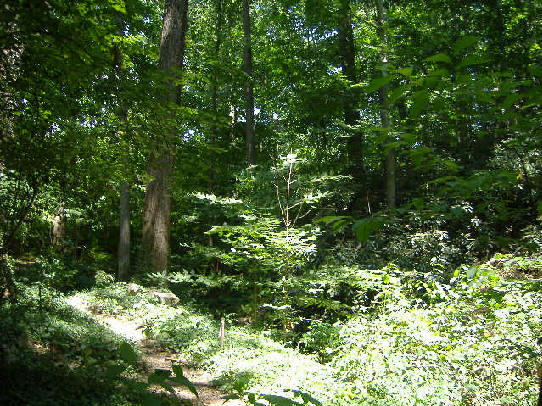
| Procedure | Sample Data | Helpful Hints | Bibliography | Acknowledgements | Contacts |
Research Question:
A Disruption in the Nitrogen Cycle?
 |
Hello to all visitors from Darriel, MariaLisa, Seanna and Kit! For the past few weeks we have devoted our time, minds, and hearts to the Environmental Science Summer Research Experience for Young Women (fondly known as E.S.S.R.E.) at Roland Park Country School in Baltimore, Maryland. In the last week and a half we have had the opportunity to design our own research project based on the results of the data we gathered in the first half of our internships. The question we chose to investigate arose from the seemingly uncorrelated relationship between numbers of protozoa and bacteria, high levels ammonia and low levels of nitrite, but almost obsolete levels of nitrate where they should have paralleled those of ammonia. Our mission on this site is to explain our experiment in the most simple form possible. Below you will find some background information that will hopefully help you to understand our procedure. Speaking of which, we invite you to follow the links at the bottom of this page and to get a glimpse of the scientific world which we have been studying..........
 |
Nitrogen, an element that is vital to all sources of life on Earth, is made reusable through an important process known as the nitrogen cycle (Ho, 2002). The cycle itself is commonly broken down into five steps: fixation, nitrification, assimilation, ammonification, and denitrification (Bruno and Carnegie, 2007). During fixation, bacteria convert the previous nitrogen gas into the usable form of nitrogen compound, most commonly known as ammonia. During the process of nitrification, the ammonia is converted by the bacteria into nitrite and then into nitrate which can be more readily used by a wider variety of organisms. Through assimilation, the nitrate, nitrite and ammonia are used by the plants to create proteins and nucleic acids which eventually renter the soil during ammonification after the organisms die (Environmental Literacy Council, 2006). Denitrification is when the nitrate in the soil is converted back into gaseous nitrogen.
Part of the nitrogen cycle, involves a food chain whose proper balance is ultimately responsible for the success of the nitrogen transformation. The bacteria that complete the conversion during fixation and nitrification are the food source for microorganisms; in particular, protozoa. Therefore, as the number of protozoa decrease, the number of bacteria increase because they are not being preyed upon. Since the bacteria are the transformers of the nitrogen in the cycle, the amount of nitrite, ammonia, and nitrate compounds in the soil are directly dependent on the number of bacteria. However, the levels of nitrite, ammonia, and nitrate also depend on the health of the protozoa/bacteria relationship. Some compounds, such as nitrate, are only released in large amounts when protozoa prey on the bacteria and then release them as metabolic byproducts. Therefore, a healthy correlation between protozoa and bacteria populations is vital for a balanced nitrogen cycle (Soil Biology Primer, 2007).
 |
Ideally, the compounds and organisms within the nitrogen cycle correlate with one another: as the levels of ammonium levels decrease, the levels of nitrite and nitrate increase and as bacteria levels decrease, protozoa density increases. However, runoff been known to disrupt the normal balance between microbes and chemicals within the cycle.
If you would like to study how runoff may be affecting the nitrogen cycle in your area, we invite you to look at our procedure and try our experiment.